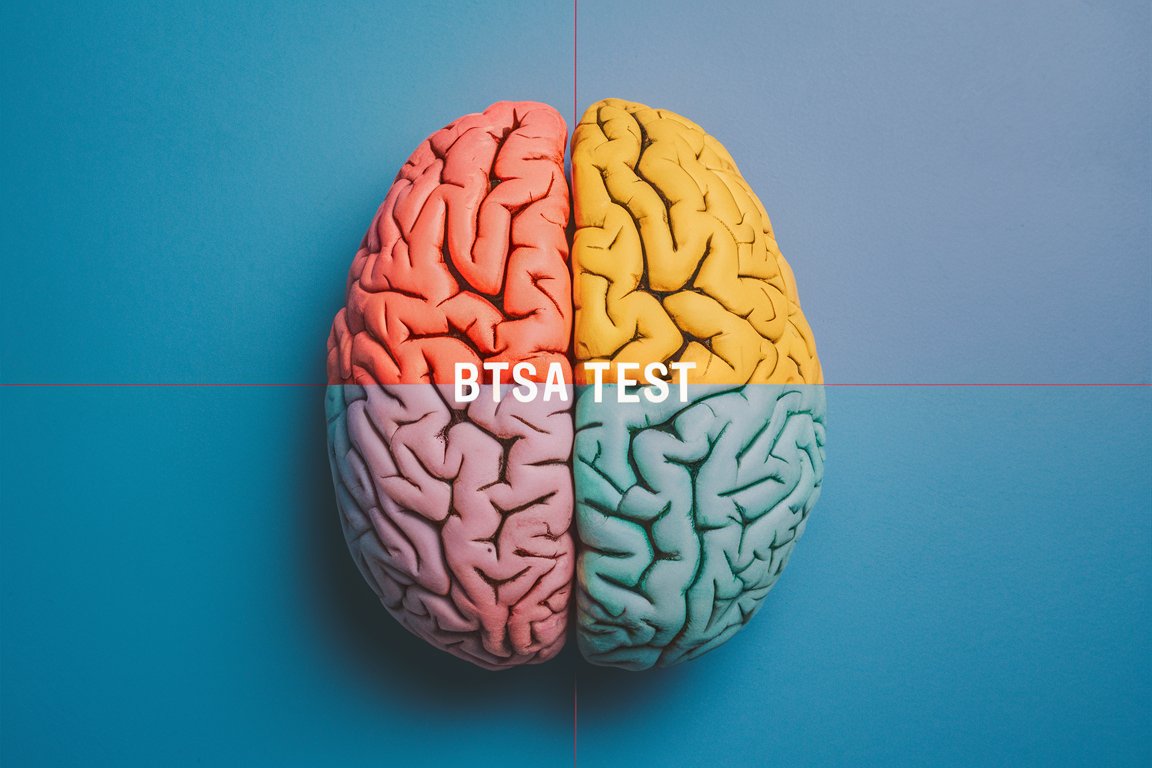THE BTSA TEST
The cortex of the human brain has 4 quadrants, and the dominance of a quadrant determines a type of specialized thinking. Every person has one of these quadrants as dominant, a type of dominant thinking.

When studying at Tecnológico de Monterrey in Mexico, my first lesson in the innovation and business course was an introduction to the BTSA test. The Benziger Thinking Styles Assessment (BTSA) is a unique evaluation that focuses on identifying an individual’s natural thinking preferences and strengths, allowing for a better understanding of one’s talents and the most effective ways to improve performance.
Types of thinking styles
There are 4 types of thinking styles. Each type is associated with a quadrant of the brain cortex. We can differentiate between frontal left, frontal right, basal left and basal right.
Each one of us has a predominant thinking style. A part of the cortex that is naturally more developed than the rest. It doesn’t matter where you have been borned, who are your fathers or which is your personality. The chances to have one or other predominant thinking style is 25 %. Yes, we are evenly distributed. Now let me explain you which kind of thinking is associated with each quadrant.

analytical - frontal left
It is associated with the logic and analysis thinking. Frontal left people are oriented to goals and achieving results. Normally they are good negotiating and debating. They pursue their objectives with determination and from a rational and logical perspective. It is common in medics and engineers.
sequential - basal left
It is associated with detail and process-oriented thinking. Having everything controlled, process well defined and rules. They look after perfection, taking care of all details. Basal left people are usually lawyers, accountant, administrative, etc.
creative - frontal right
It is associated with the visionary, creative and innovative thinking. Frontal right people come up with new and disruptive ideas easily. They are highly motivated about doing things in a different way and exploring new paths. Some roles aligned with this thinking style are artist, researcher, writer, etc.
interpersonal - basal right
This style emphasizes empathy, communication, and collaboration. Individuals with this preference excel in understanding and connecting with others. Most commonly are human resources, teachers, nurses, salespeople, etc.
relationship between quadrants
So if I am frontal right, does it mean I am bad at logic thinking? Well, not exactly. Quadrants that are collateral to our dominant quadrant are more or less developed. However, the opposite quadrant (the one who is in the same diagonal) is naturally stunted. If you are frontal left probably you are less empathic than a frontal right. Anyways, all thinking styles can be developed.
Maybe you have already noticed. We live in a world mostly dominated by the thinking styles associated with the left part. We have rules everywhere. When it is about building a mueble from Ikea or when it is about flying a plane with 300 passengers, rules and processes are present. This emphasis on rules and procedures contributes to efficiency, safety, and consistency in various domains, from everyday tasks to complex systems like air travel.
However, it’s important to recognize the value of all thinking styles and their contributions to society. While logical and structured thinking is essential for maintaining order and achieving goals, empathy, creativity, and interpersonal skills are equally crucial for fostering innovation, building relationships, and addressing complex human needs.
teams and thinking styles
The BTSA is valuable for various groups, including team leaders who can better understand their team members, workers who may feel the need to rediscover their strengths, and individuals from young adults to those approaching retirement who seek to align with their true purpose and strengths
When building a team, diversity is very important. People with different thinking styles may complement each other and create a collaborative and enriched environment where everybody can come up with different ideas. Imagine a team with only frontal left people. In my opinion, it would be very hard to take decisions, as all will be defending their own ideas probably with a lack of empathy and collaboration thinking.
who created the btsa test?
Dr. Katherine Benziger based on the theories of Dr. Carl Gustav Jung and aims to enhance individuals’ effectiveness, collaborative skills, and general well-being by providing insights into their unique strengths. She is a pioneering expert in the field of personality assessment, with over 30 years of experience focusing on the ethical development and application of personality assessing in the global business environment. The test is a validated and reliable test supported by over 15 years of research and more than 400 licensees worldwide.